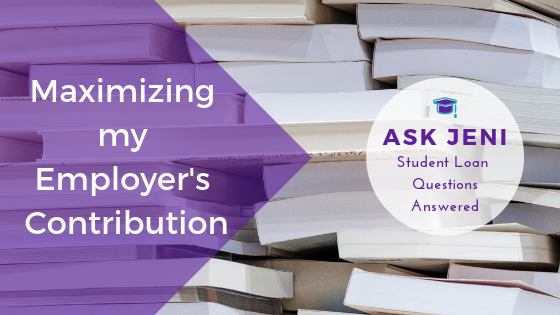Consolidate FFEL Loans to Direct Loans for Maximum Benefit
If you have an older type of federal student loan known as Federal Family Education Loan (FFEL) it’s time to make a change. Federal Direct Loans have...

By Jeni Burckart
One in seven American adults have a share of the nearly $1.6 trillion in student loan debt.
Meanwhile, unemployment remains at a low and specific positions, especially healthcare roles, are predicted to have massive shortages. With the supply of laborers low and the demand high, it’s no surprise that today’s workforce is looking for competitive benefits to help them decide where to make their mark.
One of these new benefits is student loan repayment assistance. You’re likely familiar with its long standing cousin, tuition assistance. Tuition assistance consists of programs to help employees pay for education proactively or in real time, think scholarships and tuition reimbursement. This type of educational assistance is nearly ubiquitous among employers. But how does that help fields recruit or retain a workforce that needs to arrive fully-educated to perform their job functions? It doesn’t. Which means workers are looking for help paying for the education they already completed.
Enter student loan repayment assistance. With this benefit employers offer to make a monthly contribution to their employee’s student loans. Plan designs come in endless flavors from the more budget-neutral options of PTO conversion & 401k-linked plans, to tiered plans that increase with tenure. Each of these plans is providing something employees are desperately seeking, financial relief from the increasing burden of student loan debt. Today a nurse will pay 4x the tuition and fees for a bachelor’s degree at a public four year institution than they did in 1980. The skyrocketing cost of a college education is a relatively new phenomenon, so what does that mean for the older workforce? Is this just a young person’s problem? Is a benefit catered to such a need ageist?
To adequately answer the above questions, we’re going to need to do some fact-finding. We need to check the assumptions being made about who holds student loan debt, how much they owe, and who is having a hard time repaying that debt. Combined, these pieces of information show a face of debt far removed from the stereotype of millennials holed up in their parents’ basement eating avocado toast while messing around on TikTok.
The majority of student loan debt is held by borrowers under the age of 50. But you may be surprised to find that one out of every six federal student loan borrowers is over the age of 50, their average balance is higher than that of a borrower under the age of 35, and this age group has an incredibly high rate of default.

Individuals over the age of 50 are also the fastest-growing group of student loan debt borrowers. There are two common explanations for this trend. First, as college costs increase, fewer students are able to obtain enough federal student loans on their own to cover costs, which means parents are helping out their children by borrowing Parent PLUS loans. Second, as workforce needs change, additional college education provides a way for seasoned workers to re-skill to meet demand. Essentially some adults are borrowing for their children, some for themselves, and some are doing a combination of both.
So if you’re an employer considering a student loan repayment benefit, how can you ensure that you’re covering the educational funding needs across all age groups of your workforce?
Ensure inclusive eligibility criteria.
One of the big sources of student loans for the 50+ population is Parent PLUS loans. These are federal student loans made directly to parents, they’re owned entirely by the parent and the parent is responsible for paying them back. If you want participation among this group of your employees, allowing contributions to be applied to Parent PLUS loans is a must.
Provide student loan wellness resources.
This group of employees may be struggling to balance their student loan repayment with other competing goals like a mortgage and especially retirement. The high rate of default indicates the difficulty these employees have repaying their student loans. Help ensure they understand their available repayment options, especially loan forgiveness for non-profits, by providing them access to student loan specific wellness tools and coaching. With nearly one-third of these borrowers in default, wellness resources are critical to getting their student loans back in good standing.
Student loan debt is a financial burden for individuals of all ages. Based on the distribution of student loan debt, I propose that student loan repayment assistance benefits are no more ageist than a retirement benefit. What do you think?

If you have an older type of federal student loan known as Federal Family Education Loan (FFEL) it’s time to make a change. Federal Direct Loans have...

1 min read
I’m trying to figure out the best way to maximize my student loan contribution benefit. My employer increases the monthly contribution amount each...

A federal court recently blocked the Department of Education’s newest and most affordable repayment plan, Saving on a Valuable Education (SAVE). This...